ADSactly Culture - The 7 Basic Story Archetypes
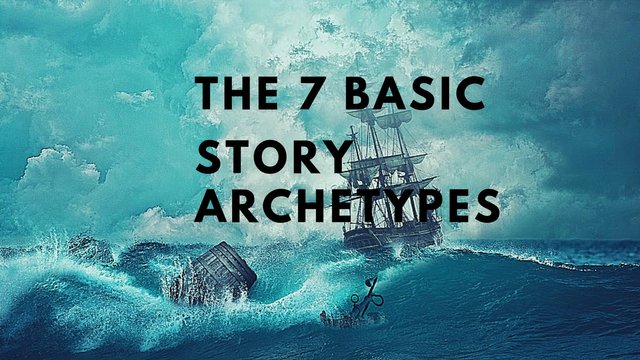
In our past few posts for ADSactly, we have looked at different character archetypes and how they fit into the larger story. We had a look at the mentor, the anti-hero, the sidekick and the byronic hero. Of course, there are many more archetypes worth exploring and I highly encourage you to do so.
And now, I thought it might be interesting to have a look at the most common story archetypes, because like with character structure, plots often follow a beaten path as well. The truth is most if not all stories have been told before, in some form or another, and most of them follow a certain theme that grips the very heart of us.
In my opinion, that is the most important rule for a story – that it should address something vital within us, a fear, a hope, a dream, a need. It might be interesting to take a second and think about the book you're currently reading – why are you reading it? How does it serve and what do you enjoy about it? What does it make you feel?
Whether you found an answer to these questions or not, read on.
In 2004, British journalist Christopher Booker published a book entitled The Seven Basic Plots. It contained a Jungian-based analysis of story types and their possibly psychological interpretations. And while we won't dwell on the psychology behind each story, I would like to talk a bit about each basic plot laid out in his book.
1. Overcoming the Monster
In this first plot type, the hero is threatened by something or often enough someone. There is peace in the world, but that peace is precarious, both for the protagonist and for the universe itself.
The hero must rise to meet the monster head on and he/she must fight in order to save the world/themselves and restore balance.
The protagonist must find courage and tap into some unexpected strength, since the 'overcoming the monster' theme is often combined with the underdog themed. The classic David and Goliath, if you will, is an overcoming the monster story, because often enough in this type of plot, the evil that's threatening is far larger than the hero himself. It's a story where defeat seems certain, and yet, it isn't.
And somehow, through a great reversal of fortune, the underdog wins.
Good examples of this story archetype are the James Bond series, the ever popular Star Wars and The War of The Worlds. In all these stories, there is a seemingly clear line between good and evil and all the good forces are overpowered by the evil forces, which makes a favorable outcome unlikely, and yet, the good guys always win.
2. The Quest
Interestingly, the Quest archetype is often combined (or at least borrows some themes) from the previous one, that of defeating the monster. In many quest stories, there is also an evil force and the quest is often related to that force. For example, The Lord of The Rings is a classical quest story, but here the quest is overcoming the monster, defeating Sauron aka the bad guy.
But it doesn't have to be like that. See, the quest archetype is your basic journey story. The hero/heroes must get from point A to point B or go on a journey to obtain a certain object, and they must overcome various difficulties/ resist temptation on the way.
There is often also a romantic subplot to the story (indeed, sometimes even the main plot) where the outcome of the hero's quest is also the outcome of their love life. They must get to where they're going/find what they look for in order to get the girl. The Odyssey is a classic example of that. It's a series of seemingly random, unrelated encounters (a very common structure for the type of story) that the hero, in this case Odysseus, must get through in order to get home, to his wife and son.
Other popular examples of the Quest archetype are The Lightning Thief (Percy Jackson and the Olympians Series), Watership Down and Apocalypse Now.
3. Rags to Riches
This one often has a particular appeal to readers/viewers, because it is slightly more relatable. I mean, the previous two examples, great though they may be, are less likely to happen in real life, whereas most of us dream somewhere in the back of our heads of this rags to riches transition (though often not literally). Most people seek to better their condition.
This story of from pauper to prince follows the progress of a downtrodden character, often remarkably talented or failing that, with a good, pure heart, who overcomes the poverty that they live in and goes on to prove their mettle to the rest of the world, thus becoming great. They leave anonymity thanks to their determination, cleverness and exceptional skill and finally get some recognition.
I read somewhere online, while researching this post, a great comparison – that the rags to riches story is basically the story in the back of every artist's head. Although now struggling, each singer, actor, painter, writer hopes to stand out through their remarkable talent and leave behind their pauper condition (whether it is actual poverty or just anonymity).
Great examples of the rags to riches archetype are, of course, The Prince and the Pauper, Jane Eyre, Great Expectations and Cinderella.
4. Rebirth
A very common plot archetype is that of the character's rebirth. Again, extremely attractive to the audience, since most people seek redemption of some kind in real life. This story sees the protagonist fall under some great spell. Here perhaps the threat is larger than in any of the other archetypes, because here the hero must at least appear defeated. He must fall under the power of this great shadow and everything seems lost in the rebirth archetype. Of course, it couldn't really be a rebirth without an apparent death, now would it?
Whether voluntarily or not, the main character is trapped in a bad place which he must escape or be doomed forever. Case in point, Scrooge in A Christmas Carol, who must become a better person and renounce his measly ways in order to find forgiveness.
But the rebirth story doesn't only follow people who are actually doing a bad thing and they are often trapped through no fault of their own. For example, the Beast in Beauty and the Beast. According to the original tale by Gabrielle-Suzanne Barbot de Villeneuve, the Beast is in fact a handsome prince who was turned into a hideous monster after refusing the advances of an evil fairy (often omitted from modern adaptations). Only by finding true love (another common motif) can he regain his true appearance.
Good examples of the rebirth archetype, aside from the ones above, are The Secret Garden, The Frog Prince and Doctor Who.
5. Voyage and Return
Or 'There and Back Again', as JRR Tolkien famously put it in his beautiful novel 'The Hobbit'. The voyage and return archetype sees the otherwise perfectly normal protagonist cast into a strange land (sometimes magical, sometimes not) and follows his journey as he must overcome various challenges posed by this strange land in order to get back home.
It's a story of usual people in unusual places, if you will, and it's a very interesting theme, if you think about it. It's basically your life. And mine. And everyone's life. Because the main thing about this type of story is the experience gained during the journey. The protagonist goes to this place they've never been before and on their way back, they find something (usually within themselves) that they didn't know was there before. In The Hobbit, it is courage. It's the archetype that tells you anyone might be a hero and we just love that, don't we? Who doesn't want to be a hero?
A good example of this archetype (beside The Hobbit) is, of course, Alice in Wonderland, the prototype voyage and return story. Alice, a normal girl, finds herself cast into this odd new world, Wonderland, that doesn't really function by the same rules as her normal world. And she is forced to use her brain, to come up with unlikely solutions, in order to come back home. Although it's a journey story, the voyage and return is basically a story of self-discovery.
But the protagonist doesn't necessarily have to go through a magical, weird land. No need for dragons. Another great voyage and return tale is Cast Away, where the main character is a perfectly normal guy stranded on a deserted island. He must undergo a radical transformation to survive and get home.
6. Comedy
I know, we've been talking about all these heroic deeds and now...comedy. Sounds a bit strange, perhaps, but not all stories have to be terribly dramatic, you know? And besides, when I say comedy, I'm not talking about the 'haha' type of brainless humor or silly skit.
No, the comedy archetype refers more to classical, cleverer comedies. Think Shakespeare here. The comedy archetype involves some sort of confusion/miscommunication that throws the main characters into turmoil. It's sometimes a series of events and encounters that only deepen the confusion (which threatens to turn the outcome of the story into disaster) but are always resolved, by the end. Usually, in an all-revealing type of moment.
Think A Midsummer's Night Dream, where through trickery and mistakes, the love stories of the characters become intertwined, giving rise to jealousy, sadness and hatred, but in the end, everything is resolve and it all turns out to be a big misunderstanding.
Usually, the comedic factor in this archetype doesn't actually come from humor or jokes, but from seeing the characters thrown into impossible situations.
Common examples include Bridget Jones's Diary, Twelfth Night and Four Weddings and a Funeral. Most romantic movies fall under this category.
7. Tragedy
Our last archetype generally shows a protagonist who has some huge flaw of character that eventually proves to be their undoing. This is the only archetype that, as a rule, does not have a happy ending. Whereas in the previous examples, the hero eventually triumphs and overcomes that flaw (see rebirth), here he is doomed to fall under it.
This flaw or sometimes a great mistake of the main character often leads to the death of innocents and the loss of everything that is good in the character's life. It often ends in the protagonist's death, after terrible events.
A good example is Macbeth. Wishing for power, Macbeth slays the king (encouraged by his wife) and takes the throne for himself, which then leads to war breaking out and both he and his wife are haunted by the crime they have committed, resulting in her death. A broken man, who's now lost everything, Macbeth dies.
This is again an immensely popular archetype because many people have a fascination for tragedy, for the ultimate undoing. Maybe because we wish to win and overcome, at least on the surface, but there is always an underlying knowledge that it might end badly.
Other good examples of the tragedy archetype are Romeo and Juliet, The Picture of Dorian Gray and Anna Karenina.
And thus concludes our post about story archetypes. Did you see your favorite story mentioned on here? What archetype does it follow?
Authored by : @honeydue
Click on the coin to join our Discord Chat

Witness proposal is here:
Go To Steem Witness Page
In the bottom of the page type: adsactly-witness and press vote.

Use small letters and no "@" sign. Or, click here to vote directly!
Thank you!
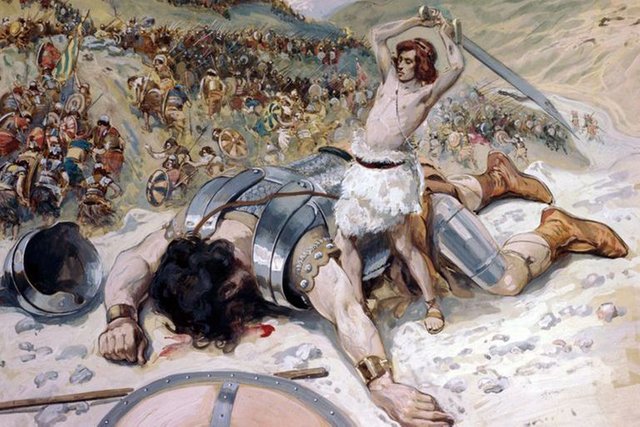

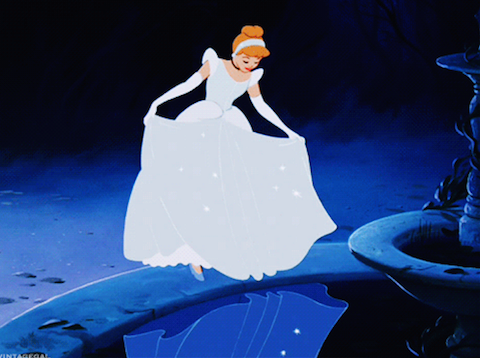
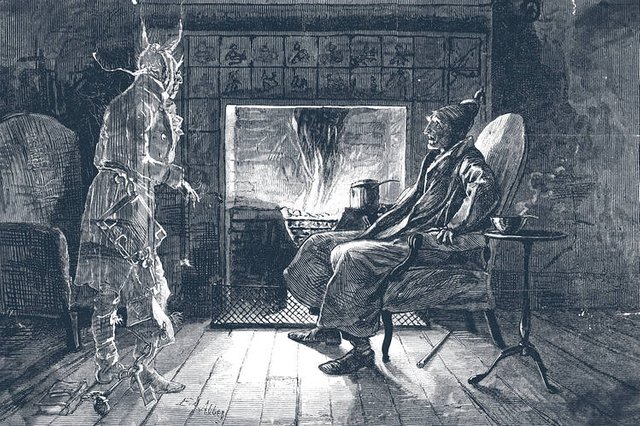
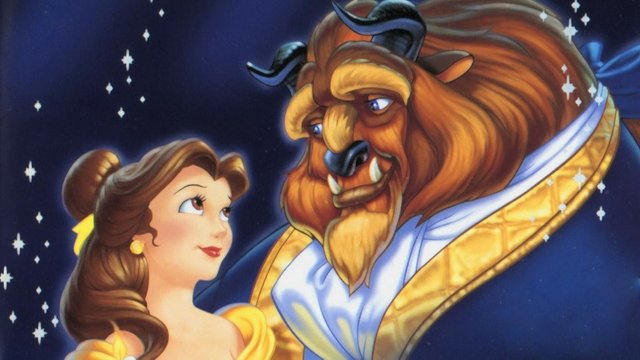
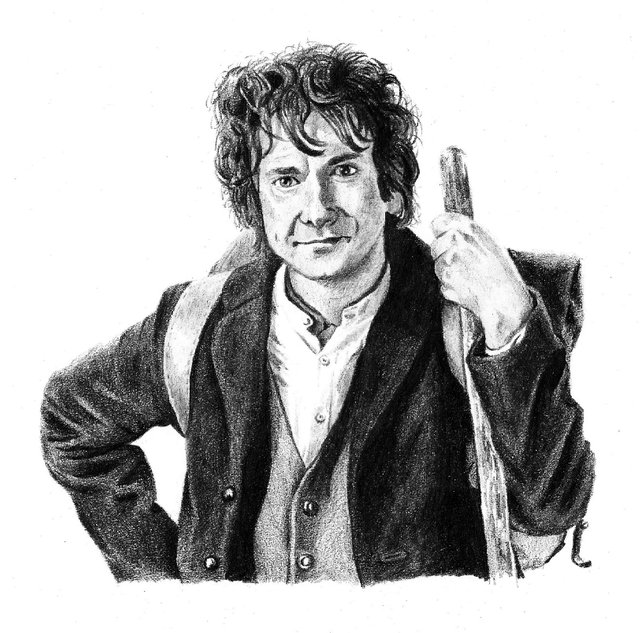
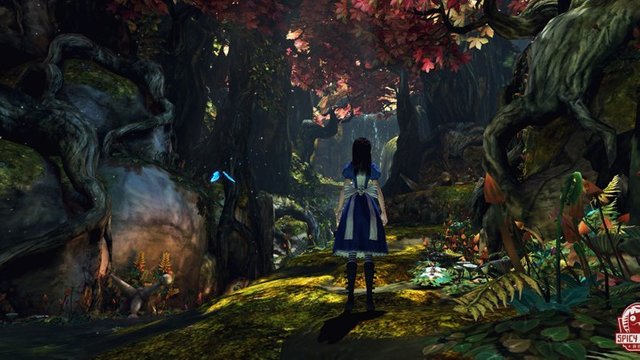
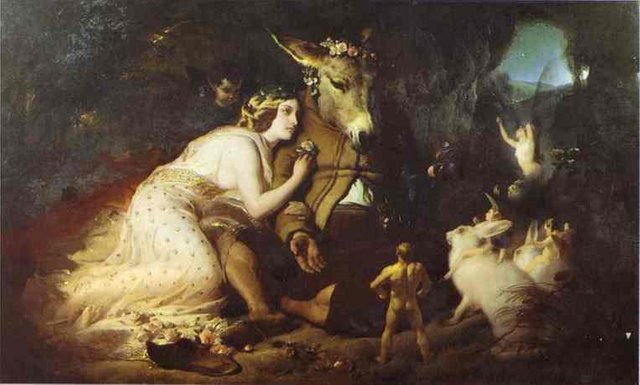
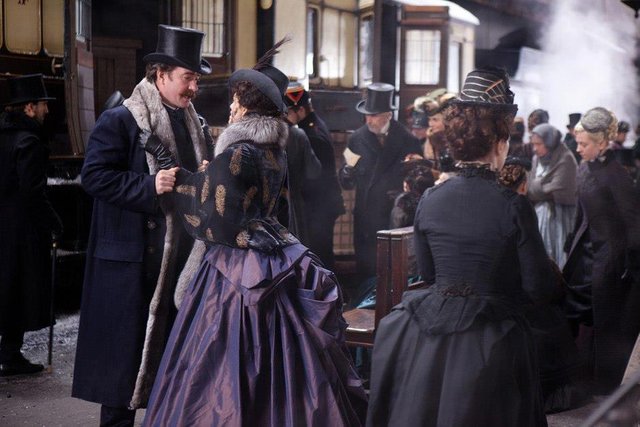
This will help me a lot in my own writing efforts. It's good to narrow these things down.
Posted using Partiko Android
While reading your post, @honeydue, I remembered many books, movies that reproduce the archetypal stories that you have very well posed and exemplified. He also remembered the famous poem Ithaca by the Alexandrian poet Constantine Cavafis. In it we see how every hero must go out, fight, fight, have a change, and then return full of glory. The Cyclops, the Lestrigons and the ferocity of the god Poseidon will not appear in your path if you maintain a "high thought", assures Cavafis; the dangers will only arise if you carry them inside, if your soul puts them in front of you. With these words, the poet reminds us that on many occasions the demons are within us, and that the physical journey can also be an inner journey, inner monsters that we must overcome. As always, interesting post. Thank you for sharing.
I thank you for your new commitment in the treatment of this attractive issue of narrative archetypes (which includes that of the hero). Archetypal stories is a central facet. I don't know Christopher Booker's book, whose thesis you follow in your exhibition (which I suppose was nourished by the contributions of previous scholars such as Joseph Campbell or Northrop Frye). When I read your post I remembered something said by the writer Jorge Luis Borges (of great international recognition), who said that universal stories could be synthesized in four or five. In his short essay "The Four Cycles" of his book The Gold of the Tigers (1972) he formulates that these four stories are: "that of a strong city that encircles and defends brave men"; "that of a return"; "that of a search" and "that of the sacrifice of a god".
Very good work, well exemplified and illustrated, @honedue. Greetings.
It will always be fascinating to try to understand why our imagination works the way it works, and the more we explore the issue, the more common behaviors we find.
The Jungian-based Christopher Booker classification you cite is very interesting and certainly covers a very broad spectrum of recurring cases. Your reflection brought to mind the work of a Russian theorist who explored these issues very early, albeit from the perspective of folklore: Vladimir Propp.
This analyst located, after the analysis of a hundred or so Russian folk tales, 31 common functions, covering an extraordinary number of universal narrative cases. His conclusions were published in 1928, in the book Morfológuiya skazki, and influenced studies later made by Claude Lévi-Strauss and Roland Barthes, who modified their categories and adapted them for application in Western and contemporary stories.
Beyond the technical and theoretical aspects, what I find most attractive about these reflections is what you so clearly point out at the beginning of your post:
These issues are also the foundation of the studies that you quote, those that I have cited and, of course, the study of Jorge Luis Borges that he has cited in his comment @josemalavem.
Borges, the great reader who was a writer and critic, is proof that interests, in these cases of imagination, are common.
Thank you for putting us on such a wonderful network of readings and reflection with this series. I am grateful, @honeydue.
Great summary of the main archetypes. There is a joke among Hollywood scriptwriters that producers are always demanding "give me the same thing, only different." If you follow the modern films, they all follow the same path as literary archtypes.
Knowing some "technical stuff" about writing - like "basic story archetypes" - is good, but what is actually the most important matter in literature? To have something crucial to say. Literature without an message is like a chest without content - dissapointing.
You really can extract from a variety of stories. then present it to the reader. this is an easy way to understand reading patterns in various works. When we try to think about what we can draw from the story, that's when you offer the core summary form of the various stories.
this will be very useful in guiding the reader of literature.
Thank you @honeydue
Thank you @adsactly
Thank you Steemit
Warm regard from Indonesia
thats an interesting coherent story of archetypes concerning most important characters and plot i like it thanks for sharing :)
Hi, @adsactly!
You just got a 0.5% upvote from SteemPlus!
To get higher upvotes, earn more SteemPlus Points (SPP). On your Steemit wallet, check your SPP balance and click on "How to earn SPP?" to find out all the ways to earn.
If you're not using SteemPlus yet, please check our last posts in here to see the many ways in which SteemPlus can improve your Steem experience on Steemit and Busy.